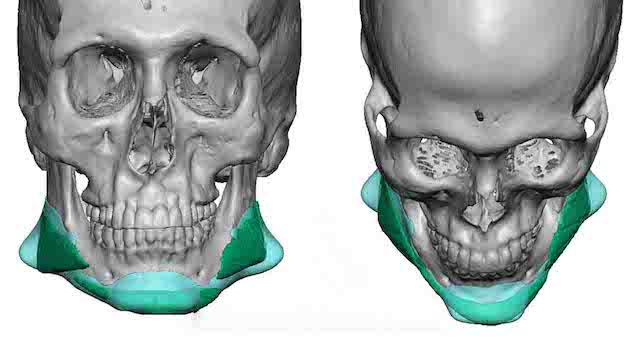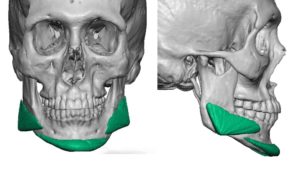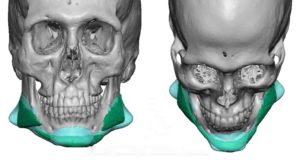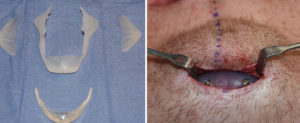Background: The most common approach to a complete jawline augmentation would be with the use of standard chin and jaw angle implants. This can work well for many patients but requires proper implant selection and placement to be effective. While this sounds straightforward it often is not so simple. Chin and jaw angle implant styles and sizes are numerous and getting three standard implants into ideal position on the three corners of the lower jaw is more challenging than it may seem.
When the use of standard chin and jaw angle implants have produced a less than satisfactory result, the patient is left with two choices….revise/reposition the existing implants or replace them with a new custom designed one-piece jawline implant. Which is the best choice depends on whether the standard implant problem appears to be easily remedied or, even if the implants were well placed, whether they had a good chance of aesthetic success.
When choosing a custom jawline implant as a replacement for standard chin and jaw angle implants, the indwelling implants pose advantages and disadvantages. They are enormously helpful in the design process as they have known dimensions and eternal effects. That knowledge is invaluable in providing a guide as to how to make an implant design that can come closer to the desired aesthetic result. Their disadvantage is that they are encapsulated and often have some amount of bone overgrowth on their edges. While not insurmountable the pocket dissection for the larger jawline implant is more difficult than if it were completely unscarred tissues.
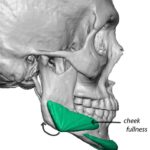
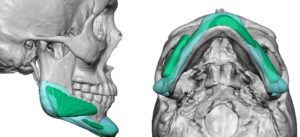
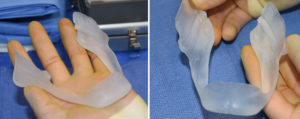
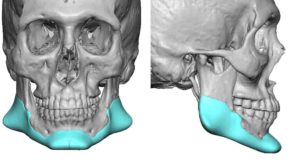
Case Highlights:
1) Malposition of standard jaw angle and chin implants is not uncommon and is one reason for switching to a custom jawline implant for replacement.
2) In designing a custom jawline implant with existing malpositioned standard implants, their sizes and locations help guide one to an overall implant design that will work better.
3) Placing a custom jawline implant when standard implants exist requires capsulotomies and removal of bone overgrowth from the standard implant edges.
Dr. Barry Eppley
Indianapolis, Indiana

